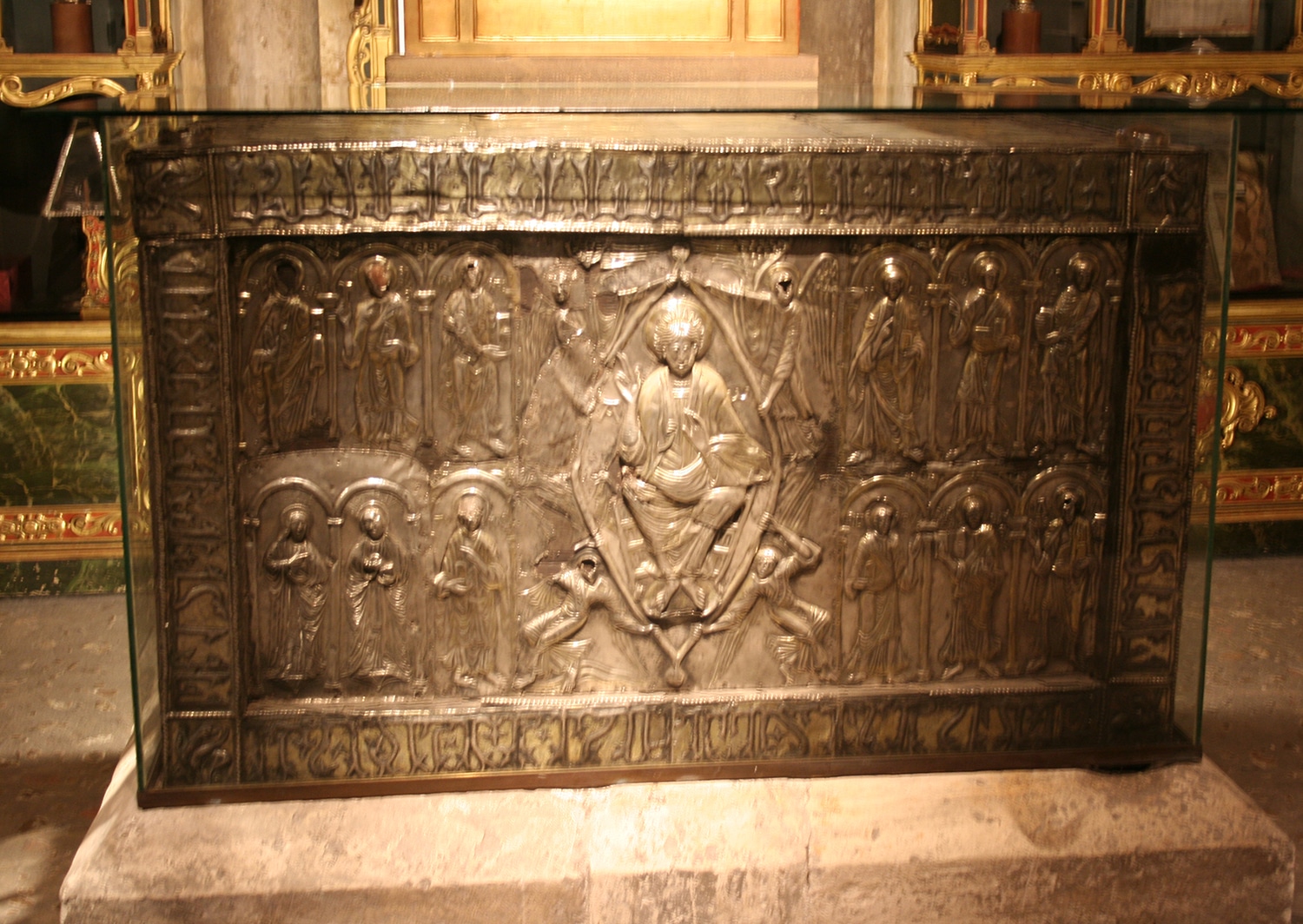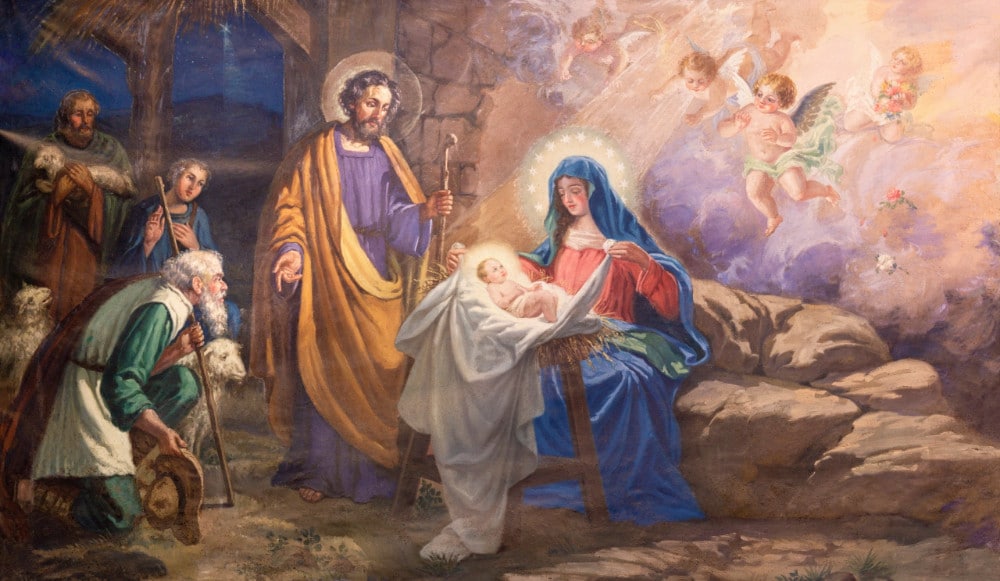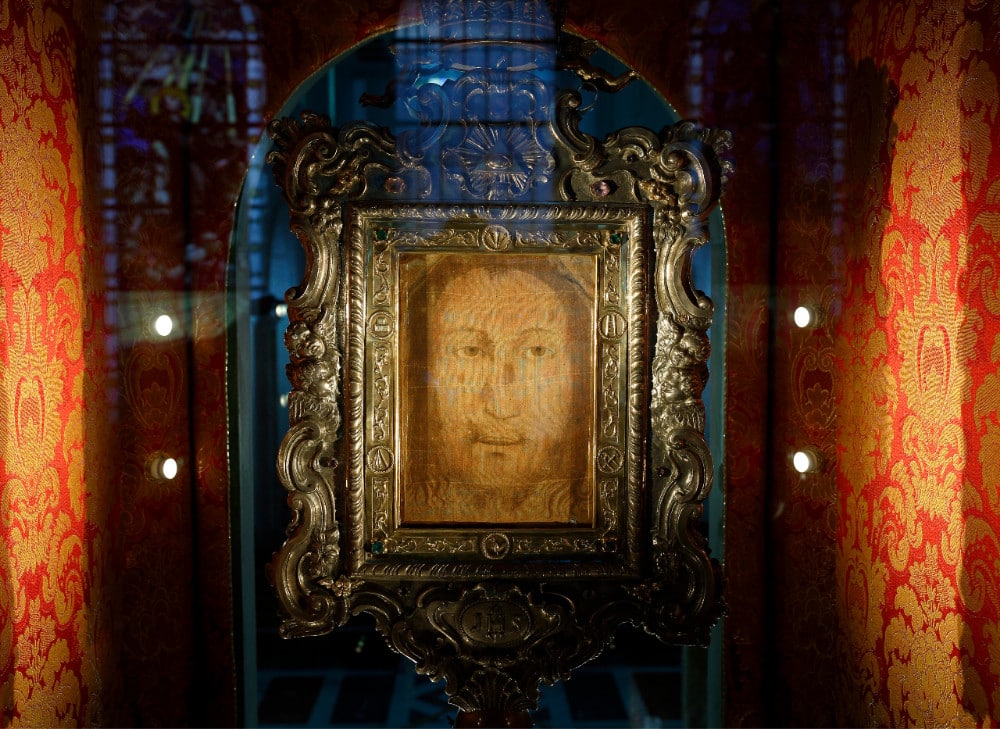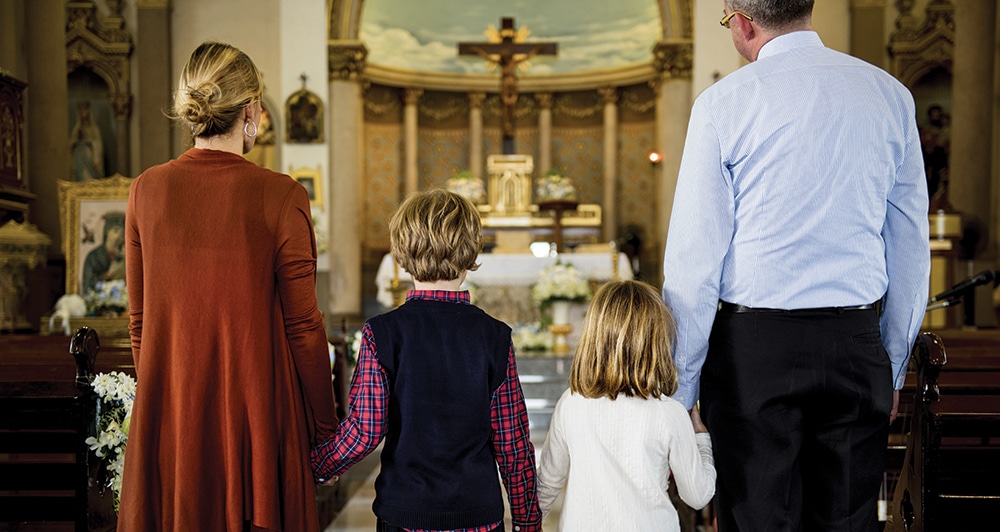“When Simon Peter arrived after him, he went into the tomb and saw the burial cloths there, and the cloth that had covered his head, not with the burial cloths but rolled up in a separate place” (Jn 20:6-7).
Many people, Catholics and non-Catholics alike, are familiar with the Shroud of Turin. This incredible, long-studied artifact is well-known around the world. But little notice is given to the second cloth item found at the tomb: that napkin which had been on Christ’s head, rolled up in a separate place.
The Cathedral of San Salvador in Oviedo, Spain, is the privileged keeper of the sudarium, this head-covering that was wrapped around the head of Jesus after his death. “Sudarium” translated means “sweat cloth.” In the case of the Sudarium of Oviedo, it appears to have been applied to the head of Jesus while he was still hanging on the cross. The stains on this cloth correspond closely to those stains found on the Shroud of Turin. This is why it is believed that the Sudarium of Oviedo is the head cloth or “napkin” mentioned in St. John’s Gospel.
Three reasons to honor the Holy Face
Based on the stains that appear on the sudarium, it looks to have been applied gently, perhaps with even great reverence. The hood which covered Jesus’ face is a testament to the love and adoration of those who helped bury him. What did our Lady, Nicodemus or Joseph of Arimathea think when they covered the holy face of Christ? Did they recall how Moses covered his face when he encountered the burning bush? Or how the prophet Elijah also covered his face when God came to him on Mount Carmel? Did they consider how this poor disfigured face was the face of God himself?

It is interesting to note that, in addition to covering their own faces in the presence of God, the ancient Israelites also kept the command to not create an image of God in order to worship it (cf. Lev 26:1). The face of God was so powerful and wonderful, but due to original sin, it was essentially inaccessible. With the coming of Jesus, this was no longer the case. God gave us his face through the incarnation. At his Resurrection, the sudarium was set aside in a separate place, symbolizing that God was now accessible to his people. The risen Jesus showed his face not just to his 11 disciples and Mary Magdalene, but to over 400 people. God was truly with his people, and they could finally gaze upon and adore his face.
But Jesus’ glorious face, which also had endured blows, spittle and other torments during his Passion, is not always adored today. As time passed after his Ascension, it seemed as though people forgot his holy countenance. Between 1843-1845, our Lord appeared to a Carmelite nun, Sr. Marie de St. Pierre, calling for a revitalization of devotion to his holy face, “which has few adorers.” Our Lord asked for this devotion to be renewed for three purposes: for the re-sanctification of Sundays, in reparation for blasphemy, and in reparation for the very denial of God.
A twice-forgotten devotion
Two hundred years have passed, and it seems as though we have again forgotten our Lord’s request. It’s easy to look at the secular world and see how the Lord is not loved in the ways he requested, but how well do we as Catholics follow his requests? Do we truly rest on Sundays and spend time with him, or do we go through the motions at Mass and use the day to catch up on work? Are we cognizant of how we use our speech, especially when speaking to and about others, recalling that we are all members of the body of Christ? Do we remember our Lord’s presence with us throughout our days and truly trust in him?
The physical items that Jesus left us — the Sudarium of Oviedo, the Shroud of Turin and other articles of his Passion — remind us of his closeness to us. Through them, we recall the divine face which appeared to the disciples with the words, “Peace be with you.” When we love his face, we join the company of other saints who were especially devoted to the Holy Face: Sts. Louis and Zelie Martin, St. Therese of the Child Jesus and the Holy Face, and Sr. Wilhelmina Lancaster. And when we finally see his face, we shall be fully satisfied (cf. Psalm 17:15)




